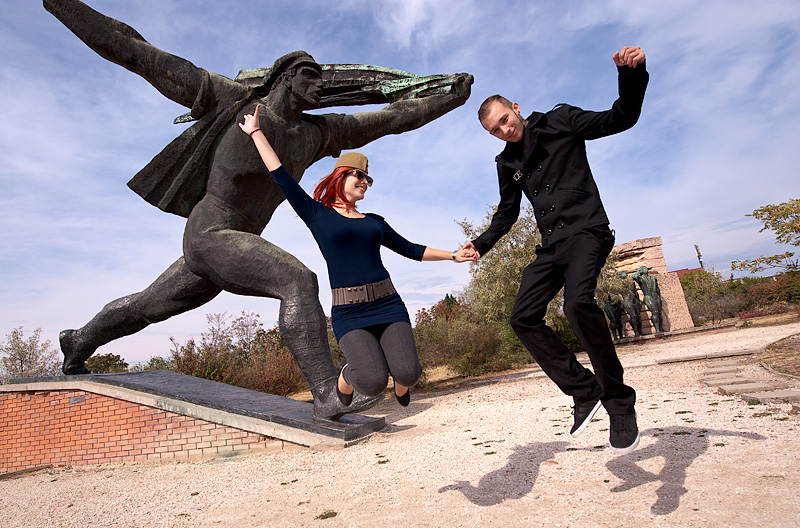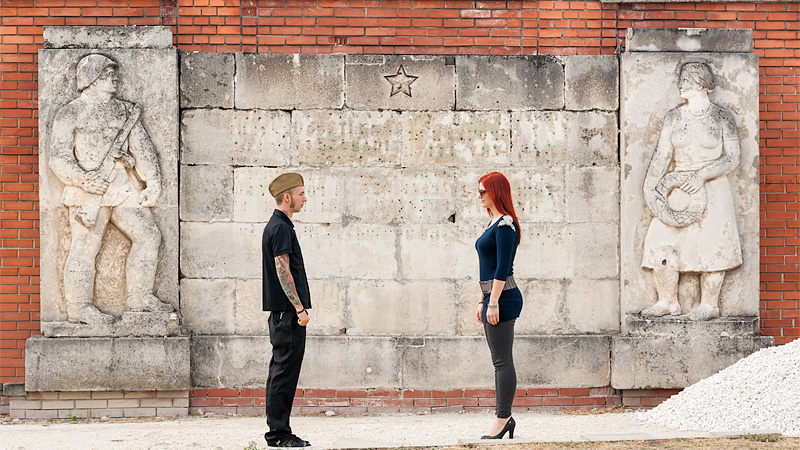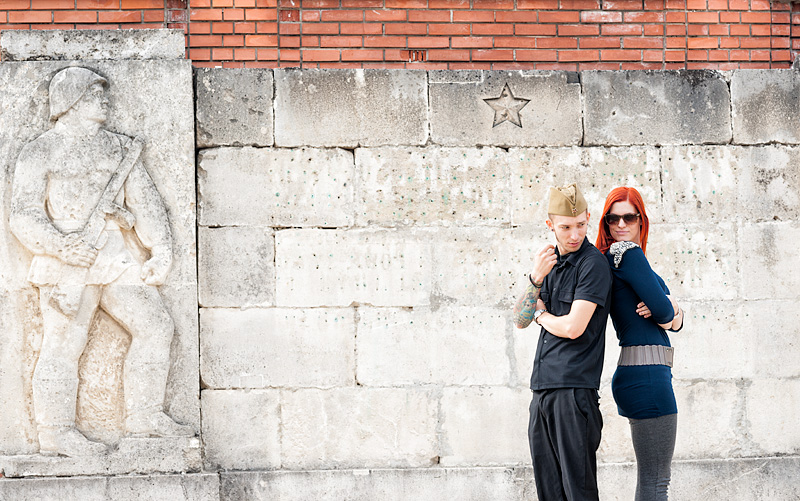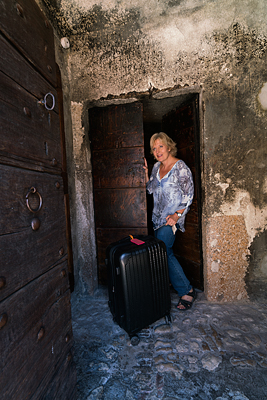

Ever wonder whatever happened to those giant statues of Communist leaders and exemplary workers that were scattered around Eastern Europe during Soviet occupation? Well, the statues that once lined important streets, intersections and squares in Budapest between 1947-1988 now stand in this park on the outskirts of town, just 15 minutes by car, bus or taxi.
Wondering what locals thought, I visited with a man who grew up during Communism, and two Hungarians in their early twenties who knew very little about that history. As we stood in the reception area, the traditional Soviet-Russian marching song Polyushka suddenly rang through loud speakers. I noticed my driver, Stephen, immediately but quietly singing along—-the old familiar words brought up to the forefront of his memory from a distant past. Oh, yes, he nodded, he remembered singing those songs in school and marching down the street to those rhythms as a boy, 23 yrs ago, like it was yesterday.


There are no wordy descriptions, fine print or newspaper clippings here at this outdoor museum. Just giant statues spread around 8 grassy circles (cauz’ Communism led nowhere), an old Trabant car, and a phone booth where you can listen to Stalin or Lenin speak from the past. Akos Eleod, the 30 year old architect who designed the park, did so with the intent to bring forth the atmosphere of dictatorship and the opportunity to further analyze it (why did it happen? how did it happen? could it happen again?)


In his words, “This park is about dictatorship but as soon as this can be talked about, described and built, the park is already about democracy. After all, only democracy can provide the opportunity for us to think freely about dictatorship, or about democracy, or anything.” The park is more a critique of the ideology behind these authority figures that were once prominently displayed for all to see. A remembrance.


Liberating Soviet Hero, 1947, bronze. This statue, which stood atop the capital’s prominent Gellert Hill, represented Red Army soldiers that liberated Hungarians from German occupation during WW2. Unfortunately for Hungarians, the Soviet liberation ironically aborted from freedom to a totalitarian dictatorship occupation.


Lenin (1870-1924) founder of the Soviet Union, and its prime minister. His imposing portrait hung in every classroom, office and institution. And statues were erected in important locations like Parade Square where political and military rallies were held.


If you had the chance, what would you ask him?


Monument to the Hungarian Socialist Republic, 1969, bronze. A short-lived (133 days) revolution based on a Soviet model, the Hungarian Socialist Republic sought to improve the political and economic crisis that resulted from WW1 as the Austro-Hungarian Monarchy was collapsing. But the activists, who had been introduced to communist ideology while imprisoned in Russia, could not gain sufficient support in their homeland. This flying man statue “To Arms!”represents a soldier inciting others to join his army. But this statue, placed in the middle of city park in the early 70s, became somewhat of a joke among the locals. To them he became a “cloakroom attendant” running after someone, shouting, Hey, sir, you forgot your scarf…


Worker’s Militia was an armed brigade of volunteers under the Hungarian Socialist Worker’s Party that grouped together in an effort to support Communism after the 1956 revolution.


Under new Soviet occupation, Communist leaders presented new heroes–working men as role models for young people to look up to.


Memorial to the Heroes of Peoples’ Power, 1983, limestone. Stone wall erected in memory of those who died or were murdered defending the Communist party.




All that’s left of Stalin’s 8 meter bronze statue is his boots. Originally his statue stood on a grandstand in the central square of Budapest, alongside communist leaders who saluted marching adults and children alike who were forced to parade past them during communist celebrations and national holidays. On October 23, 1956, a rebellion broke out against the heavy oppression in Hungary, and an angry crowd sawed off Stalin’s statue at the knees.
During this 1956 uprising, political activist and Hungarian writer Gyula Illyes openly published his poem One Sentence about Tyranny. In 46 stanzas, he describes the facets of tyranny. “Tyranny exists not only in the barrel of the gun…there’s tyranny in the nursery, in father’s advice, in your mother’s smile… not just in wires with barbs and hooks…you no longer know or feel what it is to live, eat meat or bread, to desire to love or spread your arms wide in appeal, it is the chain slaves wear that they themselves prepare…like moles in sunlight we crawl in pitch darkness, sprawl and fidget in the closet as if it were a desert because where tyranny obtains everything is vain, the song itself through fine is false in every line, for he stands over you at your grave and tells you who you were, your every molecule his to dispose and rule.”(One Sentence about Tyranny, Illyes, 1950)


.jpg)
